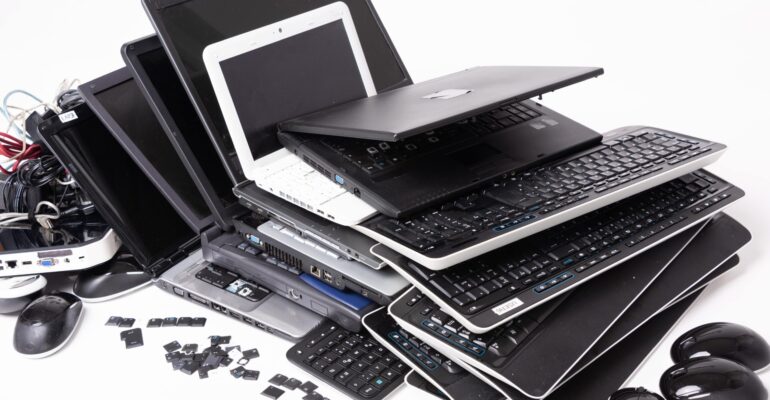Disposing of IT equipment, is there a right way?

The impact our belongings have on the environment, as they become obsolete, is at the forefront of everyone’s minds. This should be no different to the approach an organisation should take when recycling equipment in line with a sustainable waste strategy.
An organisation is obligated to dispose of unused IT equipment in an environmentally responsible way that would adhere to government regulation.
Introduced as a law in 2014 The Waste Electrical and Electronic Equipment (WEEE) regulation which prevents collection, recovery, and recycling of waste electrical and electronic equipment from landfills. Overlapping with this, the Waste Acceptance Criteria (WAC) which requires testing to be done on the equipment as to if it is inert, hazardous, or non-hazardous which would make it acceptable for a landfill.
Consider Recycling First.
As we are encouraged to recycle more in everyday life, organisations should be held at the same standards. Recycling ultimately reduces the volume of waste which ends up in landfill sites or dumped illegally. The benefits can be seen as:
- The demand for new material is reduced
- Computing equipment can be refurbished and offered at a lower cost to an organisation
- It is an environmentally responsible approach
The list of technology equipment that can be recycled is endless, ranging from your most common equipment such as monitors, PC’s, and servers. To the peripherals such as printers, scanners, keyboard & mice, and phones can all be utilised again. It should, however, be noted, elements of any IT system, like a PC, may need particular specialist expertise to be recycled as their components contain a range of different materials.
What Is a PC made of?
The complex mixture of materials can make PCs very difficult to recycle, an average PC contains:
- 23% plastic
- 32% ferrous metals
- 18% non-ferrous metals
- 12% electronic boards
- 15% glass
How each organisation handles its waste will vary from company to company. As the importance of recycling and the environment grows so does the number of disposal specialists with available services. Not only are these specialists able to take equipment and recycle them but in many cases, they will look to refurbish and sell the equipment into a secondary market. By letting the equipment be sold again this will potentially give an organisation a buy-back value on the equipment.
As IT suppliers look to become more environmentally friendly many have now started offering a service for disposing of technology equipment. As the equipment becomes obsolete or refreshed they will attempt to recycle and refurbish this equipment securely and responsibly.
If this equipment cannot be refurbished it will be de-manufactured and sorted according to its core materials. Metals which can be recycled such as Steel and Aluminium are often used to make products which range from car parts to plastic toys or may even find themselves reused as another piece of IT equipment.
Is there an alternative to disposing or recycling equipment?
A mutually beneficial option as another alternative for IT equipment is to donate equipment. There are many not for profit organisations and social enterprises that will find a huge benefit from donated equipment. Many organisations use this as a way to give back to the local community as a help to their cause.